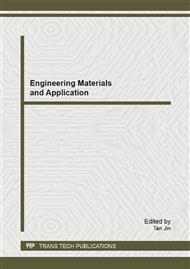p.937
p.943
p.949
p.955
p.961
p.967
p.976
p.981
p.986
MEMS Tri-Axial Tactile Sensor for Sensorized Guide Wire in Catheterization Application
Abstract:
This paper describes the integration of micro-electro-mechanical systems (MEMS) tri-axial force sensor using polyimide-based substrate for sensorised guide wire application. For tri-axial force sensor, piezoresistive silicon nanowires (SiNWs) are embedded into a cross cantilever design with a maneuverable stylus to allow the detection of force in all directions, and amplify the tactile forces at the tip for transverse directions. The electrical resistance changes in the four SiNWs are used to decode an arbitrary force applied onto the force sensor. Robustness of the force sensor is improved due to the novel design by incorporating a mechanical stopper at the tip of the stylus. Flip chip bonding using gold stud bumps is used to mount the force sensor on a substrate for characterization and to simplify the assembly process. The packaging process of the miniaturized sensorised guide wire was presented in this work.
Info:
Periodical:
Pages:
961-966
Citation:
Online since:
January 2013
Keywords:
Price:
Сopyright:
© 2013 Trans Tech Publications Ltd. All Rights Reserved
Share:
Citation:


